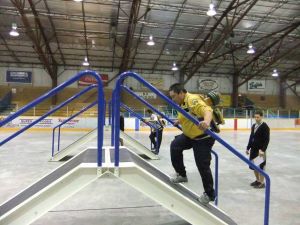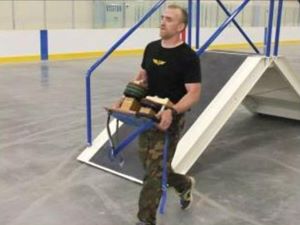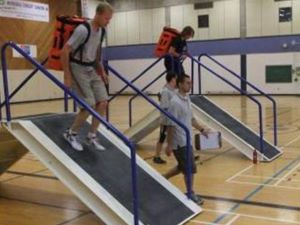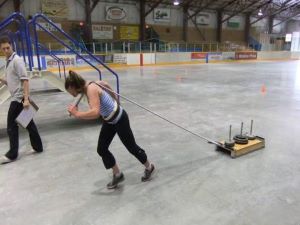WFX-FIT is an unbiased, valid and reliable assessment of the ability of Wildland Firefighters (WFF) to meet the rigorous demands required to safely and efficiently complete the critical emergency tasks involved in wildland fire fighting in Canada.
An emergency wildland fire fighting task is defined as a task in which the safety of the fire fighter, a co-worker or the public may be compromised by failure to complete or inefficient job performance.
The WFX-FIT circuit is also based on the importance of working in various types of terrain as identified by the WFF.The circuit components are identical for WFF in all agencies because they simulate the physically demanding tasks all WFF face. The time it takes WFF to complete the tasks simulates the increasing difficulty of working in challenging terrains such as mountains and muskeg.
There are five (5) components to the WFX-FIT: a screening component and four (4) performance components.
- Pre-Participation Screening
- Carry Pump on Back
- Hand Carry Pump
- Hose Pack Lift and Carry on Back
- Charged Hose Advance
WFX-FIT is completed as a timed circuit. All four performance components must be tested together. Provinces, Territories and Parks Canada have agency standards that apply to Type 1 fire fighters working in their home area. Check with the Appraiser to find out if an Agency standard applies for you. Type 1 Fire fighters must be able to complete the timed circuit test within 14 minutes and 30 seconds in order to be eligible for national exchange.
Throughout the WFX-FIT circuit, the participant wears work-out clothing, running shoes or work boots (if agency requirement) and a weighted belt which encumbers the participant with the weight of normal wildland fireline work wear.
The timed circuit involves 4 separate components performed in a continuous sequence over 40 metre laps with cone markers at each 20 metre end line.
1. Timing of the circuit begins when the participant cross the starting line while carrying the simulation pump (28.5 kg) on their back after being picked up from a 1 metre high platform. For safety purposes, the WFX-FIT Appraiser assists with the transfer of the pump onto and off the participant’s back from and to the platform. The simulation pump is carried on the back for a total of 160 metres (4 laps over the 40 metre course) traversing a ramp (35 degree pitch, 1.22 metres) every 20 metres, then the simulation pump is returned to the platform.
2. Next, the participant picks up the simulation pump from the platform in their hands and carries it for 80 metres (2 laps of the 40 metre) without traversing the ramp.
3. The participant then places the simulation pump back onto the platform, picks up the WFX-FIT hose pack containing 4 lengths of hose (25kg) from the ground and hoists it onto their back, then carries the hose pack 1 kilometre (25 laps of the 40 metre course) traversing the ramp every 20 metres.
4. In the final component of the circuit, the participant drags a weighted sled 80 metre (2 laps of the 40 metre course) on level ground to simulate advancing a charged hose (pull force required to move sled = 18.5 kg). Turn lines are also marked 3 metres beyond the end line so the participant knows when the sled has crossed the end line without looking behind.
Summarized WFX-FIT Protocol
Item Distance # of times over ramp
Carry Pump on Back 160 metres 4 X 40 metres over ramp 8 times
Hand Carry Pump 80 metres 2 X 40 metres over no ramps
Hose Pack Lift & Carry on Back 1 kilometre 25 X 40 metres over ramp 50 times
Charged Hose Advance 80 metres 2 X 40 metres over no ramps



